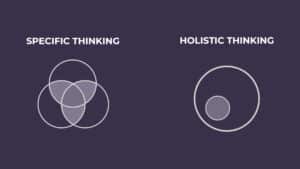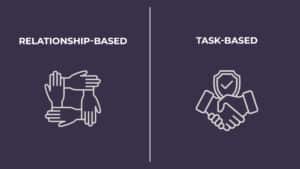Whether you already work in a multi-national organization or you aspire to get a position in one, there is a set of skills that you must possess to attract your managers’ attention.
What most people know is that to get a high-paying position in a multinational company, you need to be one of the best in your field and maybe learn a little English. However, most of these companies have other factors that are taken into the recruitment process consideration. These factors can get you rejected even if you had one-of-a-kind technical skills in your field or can get you accepted even if your technical skills are only average.
One of these factors is little known or unknown to many people although it is crucial. This factor is cultural intelligence.
Cultural intelligence is the ability to cross any cultural differences and to be able to thrive in culture as well as to successfully communicate with people from cultures that has nothing in common with your own.
In our world of globalization, which is ruled and run by international corporations, cultural intelligence (CQ) is quickly growing to be one of the most important factors in both employees and management.
In this article, I will tell you all you need to know about cultural intelligence or CQ and how to gain it to thrive in any culture.
Stereotyping and Culture Shock!
Stereotyping is a part of almost every culture that political correctness is currently trying to change. However, it’s quite difficult to remove stereotyping from people’s thought processes altogether as some stereotypes of some groups are proven to be true for the majority of people who belong to those groups.
For example, while it is a stereotype that Italian people are loud and use hand gestures as a part of their speech, it is completely expected that there are certain Italian people who are not loud or use hand gestures very often when they’re communicating. However, most Italian people do recognize this pattern as part of their culture, and hand gestures are even known to be a part of expression if you want to speak Italian like a native speaker!
There’s no denying that cultural differences result in unique traits that are common among each group of humans which more often than not can result in a culture shock when you’re dealing for the first time with a new culture, be it from a foreign country or from another part of your own homeland.
Culture shock is, unlike what the name may indicate, a process. Think of it like the grief process, but without the heartbreak and sadness, where there are specific phases that the individual goes through to reach the final one which is acceptance.
Culture Shock Phases
Everyone who experiences new cultures for the first time goes through the process of culture shock. The severity of culture shock will differ from one person to the other based on their CQ, but the four stages are always there.

- The Honeymoon
This is the stage when you’re just beginning your journey to a new place or a new environment and you’re excited to leave the things that you know behind and go experience new places and new people.
- The Frustration
In this phase, you begin to get annoyed, and in some severe cases even depressed, by the changes that don’t make you feel comfortable in the new setting. Whether you’re from a quiet little town and are annoyed by the noisy big city, or you’re traveling thousands of miles to a completely new culture with a foreign language and its own set of customs and traditions. This part of your culture shock journey is a huge challenge.
- The Adjustment
This is when you start understanding the nature of the new culture that you’re now getting acquainted with or moved to.
This can be the “make it or break it” period for you because if you’re not able to get over your frustration/depression from the change and move on to at least the adjustment phase, you won’t be able to succeed in whatever goal that you experienced this new culture for.
- The Acceptance
Here, you’re not only understanding the differences in the new culture from your own, but you’re also accepting it. Once you reach acceptance, you can act as a helper or a guide to other people who are going through the culture shock process.
On the other hand, the acceptance phase can result in you feeling like one of the people of this culture. This is the scenario where we see individuals in happy marriages with partners from completely different cultures for example.
You also have to remember that culture shock can happen to people who are moving to a new culture and it can also happen to people returning to their original culture after years of living abroad or under a contrasting set of customs and traditions.
The Secret Sauce: How to Develop & Use CQ to Achieve Success?
Developing CQ may seem hard to achieve if you don’t know what to do and what areas of your brain you need to access and what aspects of your personality to develop. However, the truth is that working on your CQ is quite easy if you know the secret to it.
In the next section, I’m going to give you the three main aspects to work on within yourself to be able to increase your CQ and adapt to any new culture you must experience whether for work or for personal relationships.
Cognitive Aspects
The cognitive aspects of your CQ can be summed up in your learning and curiosity about the new culture. For example, you can research in-depth topics about this specific culture’s traditions, cuisine, weather, national holidays and their significance, and a little bit of the history of the people of that culture to understand where all of these things come from and how they were developed over the years.
Once you learn some of these things or all of them, you can begin to strategize and plan how you will deal with and adapt to this new culture.
Behavioral Aspects
The behavioral aspect of developing your CQ is crucial. You can easily lose a job or fail at an interview because of a behavior that is normal or unnoticeable to you that the people of the new culture find offensive.
Mimicking the new culture’s acceptable behaviors and adopting its customs can go a long way in your acceptance of the new environment and in your being accepted into the new community.
In my case, I was working briefly in a country where lunch break time was important for everyone to disconnect from work and go have lunch in a nice area or even socialize. While some may think that to continue working during lunchtime will make you come off as hard-working, it would actually make you look unsociable and even a weirdo!
Motivational Aspects
You must always keep yourself motivated to learn and adapt to the new culture. Not everyone is so lucky to be put in a new culture that they were already eager to learn about and experience. Some habits of foreign people may easily provoke or frustrate you. For example, people from the Middle East are definitely louder and noisier when compared to the calm, cool, and collected people of Scandinavia. These drastic differences can affect and even hinder communication between two individuals who are working at the same organization.
This is why you have to find ways to keep yourself enthusiastic about learning about and engaging with this culture.
You can stay motivated by keeping the goal that sent you to this culture before your eyes. You can also make new friends who will help you understand and engage with new people. Lastly, you must try to find something about this culture that you like and can grow to love to keep yourself engaged.
For example, you can be attracted to the American sense of humor, the Korean K-pop, Australian wildlife, and Indian food or even hair care routine!
Once you find your hook, it will act as a gateway for you to learn to engage with this culture and achieve an amazing CQ level!
Failing to meet one or more of these 3 aspects will lead to distrust between you and the people of the new culture which will lead to the failure of your business in that new culture.
Once you manage to gain mastery over these three areas, you will reach your objective of reaching a high CQ and be able to adapt to any culture no matter how unrelated this culture is from the individual’s original culture. This way, the outcome of your experience is not going to only be getting your job or project done and going home, you will actually gain a massive human experience that will enrich your life and you may even make life-long friends!
CQ Value in Your Career
I know that it seems like a lot of work to develop CQ, especially since most of it is self-development and internal work to accept “the other”. While you may be thinking now “I have a great job in a big company and I don’t need to do any of this”, let me tell you that your CQ can affect your promotions to a management position or even can lead to you getting paid less than someone in the same position with the same set of skills but has higher CQ than you do.
At the beginning of my career, I had two situations that taught me the importance of CQ the hard way. The first is that I and a colleague of mine had a meeting abroad with a client who happened to be Indian. He kept asking us about something that we didn’t understand as we heard him say “Veb” and didn’t know what that is.
Finally, he got up to a whiteboard and wrote “Web” to the surprise of both of us, we had forgotten, or didn’t know at the time that Indian people pronounce the “w” as “v”.
In another situation, I prepared a detailed presentation for a client who got up and walked toward me, and closed my laptop! As it turns out, in his culture, people had no time or tolerance for long pitches and simply wanted an elevator pitch to save both of our time. This was a failure in a specific CQ measure that is called Application vs. principle I’m going to detail more in the next section of this article.
Both of these stories taught me how crucial CQ is especially in my line of business. So, after a few years, when we were working on a tough project that required gathering data from truckers who took pride in misleading the fools in suits and ties, I had learned my lesson by then. I studied every cultural difference between us as a team and those truckers and I found the perfect way to talk the lingo, changed what I wore, and communicated with them in the right way to get us the correct data.
Learning to develop my CQ saved me in one of the toughest projects that I worked on at the time and later when I was presenting to the GM and VP of the same company that the truckers were working for, it didn’t matter that I didn’t know who they were and what their positions are, my CQ helped my to pick up the cue and behave accordingly. Thanks to CQ, we had this huge project and we saved and extended it!
Understanding & Measuring Cultural Intelligence in Organizations
On the flip side, companies and organizations must be aware of the importance of CQ and the role it plays in its survival in today’s market.
Measuring the CQ perception and level in your company’s environment can help you solve a lot of problems. In this section, I will provide you with certain aspects to pay attention to if you want to assess CQ in your business environment. These measurements are also important to help you with your next pitch to a client or an investor from a different culture, help you improve your position if you’re working in a multi-culture environment, or even help your relationship with your in-laws if you’re marrying from a new culture!
CQ Measuring aspects
1- Power Distance

Having a high or low power distance is not necessarily a good or a bad thing as much as it’s important to identify it as an aspect of your company’s culture to help evolve CQ within your team.
2- Uncertainty Avoidance

As such, if you find a culture that has a high uncertainty avoidance index, this tells you that people from this culture have to have a detailed plan for every step before the work begins. Cultures that have low uncertainty avoidance, on the other hand, are like the agile methodology. These are people who are ready to get the work started and figure out the next stages of any upcoming issue later when the time comes.Low certainty avoidance can be found in software businesses and western societies like European countries.
3- Monochronic Vs. Polychronic

Employees will be able to recognize this culture from the interview phase as they notice that interviews don’t necessarily start at the set time and they can be delayed for 10-15 minutes. This trait usually defines a fast-paced company culture that needs a highly alert team to keep up with the changes.
From my experience, I found that this culture can usually be found in Dubai-based companies and businesses in the Gulf region in general. In these environments, it’s not that much of a big deal for someone to show up a little late for a meeting or after a deadline as long as this person has his stuff together. In other words, we’re okay with you being a little late, but it is completely unacceptable that we start a meeting or a business altogether without having a clear concise idea of what we’re doing.
4- Principle Vs. Application

Principle-first cultures, on the other hand, care about the story. Managers are willing to hear the details of your journey with the task. They want to know what issues you faced and what you did to get over those issues. You’ll find the principle-first culture mostly in European countries Vs. in the US where most company environments care only about the end game.
5- Specific thinking Vs. Holistic Thinking

This measure in CQ is crucial as the differences between the two ends of the spectrum can result in conflict if the two parties from two different cultures can’t find a middle ground. If you’re seeking employment in one of these cultures or pitching to clients from one, you’ll definitely have to meet them on their ground!
6- Task-based Vs.Relationship-based

Relationship-based cultures prefer a known business or person to work with because the risk of failure is lower than trying a business collaboration with a new person. This model can also be found in startups where the funds come from an investor that trusts the entrepreneur, not necessarily the business itself.
Task-based cultures are quite the opposite as these people tend to get the best party to get the task done regardless of knowing this person or business before or not. In such a culture, even if there is an existing relationship, the decision is going to be solely made based on the task and requirements.
7- High Context Vs. Low Context Communications

Cultures that have high context communications, however, need more effort from foreigners to understand what is meant, not only through the words, but to also read the situation, the body language, and the tone of voice of the person you’re in contact with.
Of course, in a business setting, it’s better to have low-context communication. However, if you find yourself or your business in a high-context culture, it’s important to remember to document every contact and agreement in a clear concise written medium like emails to avoid confusion.
8- Confrontational Vs. Non Confrontational

In nonconfrontational cultures, feedback will come in a nicer way, but, if you’re not paying attention, your point can be lost to the other party.
The good point here is that this is also a spectrum where you can find a middle ground of being straightforward without getting on anyone’s nerves.
Your task with CQ here is to be able to sense and adapt to the level of confrontation your client or business culture has.
Conclusion
Culture is dynamic and it certainly changes with changing times and situations. This is why it’s important to stay flexible in your beliefs about new cultures that you interact with and keep an open mind to understand the other.
Cultural Intelligence is quickly becoming one of the most important aspects of getting hired and being able to thrive in a multicultural organization. Many parameters factor in cultural differences and result in different sets of norms, behaviors, and habits. Understanding these factors can help you develop the cultural intelligence to help you get ahead in your professional life.
If you’re interested in working on and developing your cultural intelligence, you might want to start by knowing where you are on the CQ scale. Try this test out to find out your CQ. Don’t get discouraged if you score low on the cultural intelligence scale. Just follow the process that I explained in this article to get over any CQ obstacles that you may have. On the other hand, this test can save you trouble if you find out that you scored high and find out that you’re already there!




